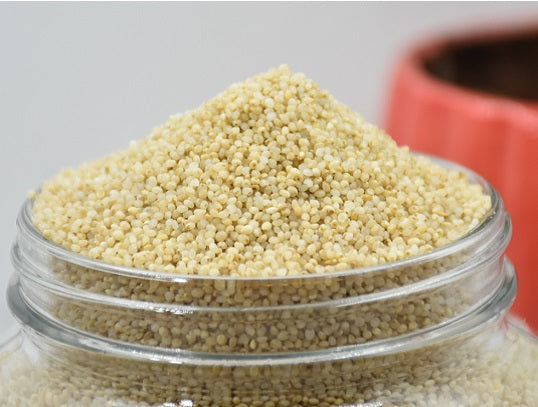Little Millets(Chama) 250 gm
Little Millets(Chama) 250 gm
Couldn't load pickup availability
Little millet(ചാമ/कुटकी), scientifically known as Panicum sumatrense, is one of the several types of millets cultivated and consumed in various parts of the world. Here is some specific information about little millet:
-
Botanical Characteristics: Little millet is a small-seeded annual grass belonging to the Poaceae family. It is a minor millet, typically growing to a height of about 60-90 cm.
-
Cultivation: Little millet is primarily grown in tropical and subtropical regions of Asia, Africa, and the Americas. It is known for its resilience to harsh environmental conditions, including drought and poor soil quality. This adaptability makes it an essential crop in regions with erratic rainfall.
-
Nutritional Value: Little millet is a highly nutritious grain. It is rich in protein, dietary fiber, vitamins (particularly B vitamins like niacin and thiamine), and minerals such as calcium, phosphorus, and iron. Little millet is also gluten-free, making it a suitable choice for individuals with gluten intolerance or celiac disease.
-
Culinary Uses: Little millet has a mild, slightly nutty flavor and can be used in a variety of culinary applications. It is commonly used to make porridge, upma (a savory Indian breakfast dish), dosa (a South Indian fermented crepe), and can be cooked and served like rice. The grain's versatility makes it a valuable addition to diets in different parts of the world.
-
Health Benefits: Consuming little millet offers several health benefits. Due to its high fiber content, it aids in digestion and can help manage weight. The grain's nutritional profile also contributes to improved overall health and well-being.
-
Sustainable Agriculture: Little millet is an environmentally friendly crop because it requires less water and fewer chemical inputs compared to some other major cereals like rice or wheat. Its cultivation can contribute to sustainable farming practices and reduce the ecological footprint of agriculture.
-
Cultural Significance: In some regions of India, little millet has cultural significance and is used in traditional festivals and rituals.
-
Global Promotion: Efforts are being made to promote little millet cultivation and consumption as part of sustainable and diversified diets. It is considered a valuable crop in the quest for food security and resilience against climate change.
Little millet, like other millets, plays a crucial role in providing nutrition and food security to communities in regions with challenging growing conditions. Its nutritional benefits and adaptability make it an important crop in the context of sustainable agriculture and healthy diets.
Share






